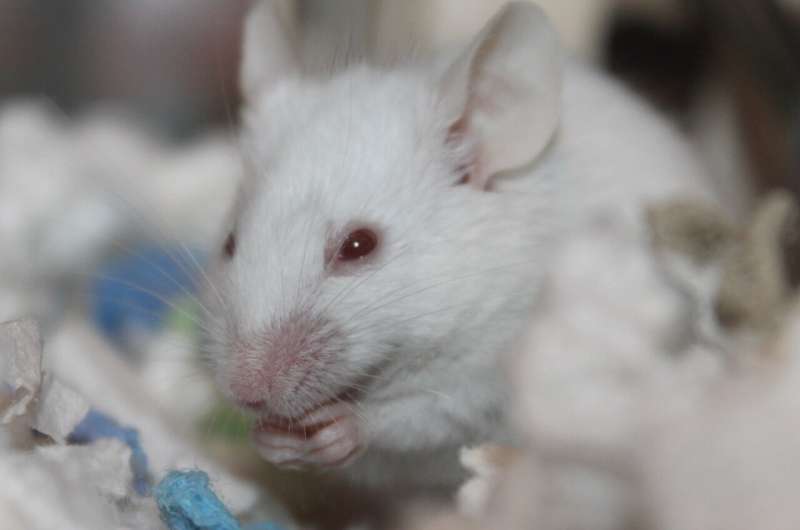This article has been reviewed according to Science X's editorial process and policies. Editors have highlighted the following attributes while ensuring the content's credibility:
fact-checked
peer-reviewed publication
trusted source
proofread
Research team creates mice that better reflect human genetic variation

The great majority of how we understand human disease, and attempt to cure it, derives from mice genetically fashioned to be prolific breeders, docile and easy to handle—all qualities that have made it the favorite tool of large-scale biomedical research. However, this human-imposed selection of these behavioral and reproductive traits has come at a hefty cost. By weeding out undesirable traits in the highly standardized laboratory mouse, researchers have also placed unseen constraints on what is possible to know and learn from them.
Beth Dumont, an evolutionary biologist at The Jackson Laboratory, and colleagues are looking to remedy this situation. By collecting mice in their natural habitats, in fields, barns and forests, and in divergent ecological niches (polar, tropical, and arid climates) across North and South America, Dumont and colleagues have developed 10 new laboratory-grade research mouse strains with genomes packed with information that had been stamped out of classical mice.
These new mouse strains, detailed recently in PLoS Genetics, will provide an important new resource for researchers worldwide. Their genomes introduce millions of novel genetic variants compared to classical in-bred strains, including predicted versions of a gene that—on average—decreases the fitness of the organism carrying it, and gene-spanning structural variants, including loss of DNA, duplicated DNA, and detached chromosomes that reattach in the opposite direction—all genetic profiles that better reflect human genetic variation.
"Since the early 1900s, we've actively removed a lot of genetic information from laboratory mice that is incredibly relevant to human health," said Dumont. "We've bred out traits that relate to anxiety, aggressiveness, and infertility, for instance, and that means we're missing out on a wealth of potentially transformative biomedical research, making it much harder to determine how effectively new treatments or pharmaceuticals will work in humans."
Dumont and her colleague, Professor Michael W. Nachman at the University of California, Berkeley and teams of graduate students went to work. They collected—with some difficulty—wild mice across five locations in Canada, the United States, and Brazil. These wild mice, which all belonged to a single mouse subspecies (M. musculus domesticus; important because they can all interbreed, which is not necessarily the case with all genetically diverse mice) looked very different from laboratory mice, having experienced adaptive pressures to survive and thrive in their respective environments.
For example, mice from Canada were bigger and had high metabolic activity to stay warm in a colder climate; mice from Brazil were smaller and their metabolism was radically different, indicating that mice collected in Brazil were uniquely adapted to a hot climate.
Dumont, Nachman and colleagues meticulously inbred these mice for 20 generations to eliminate deleterious genes while imposing very minimal selection for docile behavior and/or reproductive output. Dumont then re-derived these mice via IVF to prevent the introduction of wild pathogens, making them now suitable for laboratory use—if you can catch them. The new strains are also noticeably feistier.
"They're fast, and they don't want you to hold them," said Dumont. "I haven't been bitten, but working with them does require quick reflexes."
The wild-derived laboratory strains showed variation in phenotypic traits beyond size and speed. The introduction of millions of genetic variants captured broad variations across many biological domains. Their biochemical, neurobehavioral, physiological, morphological, and metabolic traits differed much more broadly than those in inbred laboratory mice, more accurately modeling the complex genetic basis of human disease-related phenotypes.
"Tapping into wild strains has the potential to establish a powerful suite of resources for the modeling of human traits and diseases, enabling important discoveries across pretty much every disease area," said Dumont. "As researchers start to recognize that, we'll see increasing interest in wild-derived lab mice."
More information: Beth L. Dumont et al, Into the Wild: A novel wild-derived inbred strain resource expands the genomic and phenotypic diversity of laboratory mouse models, PLOS Genetics (2024). DOI: 10.1371/journal.pgen.1011228





















